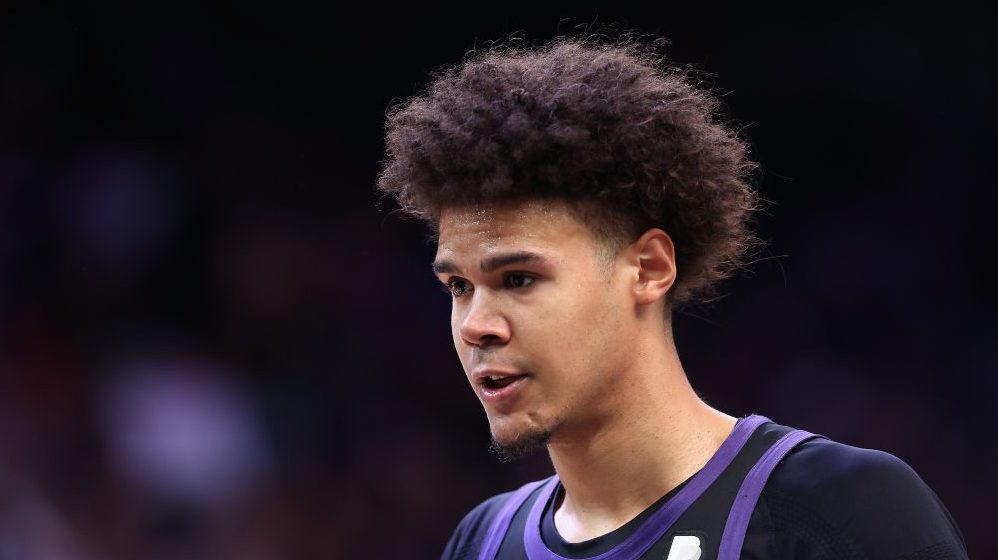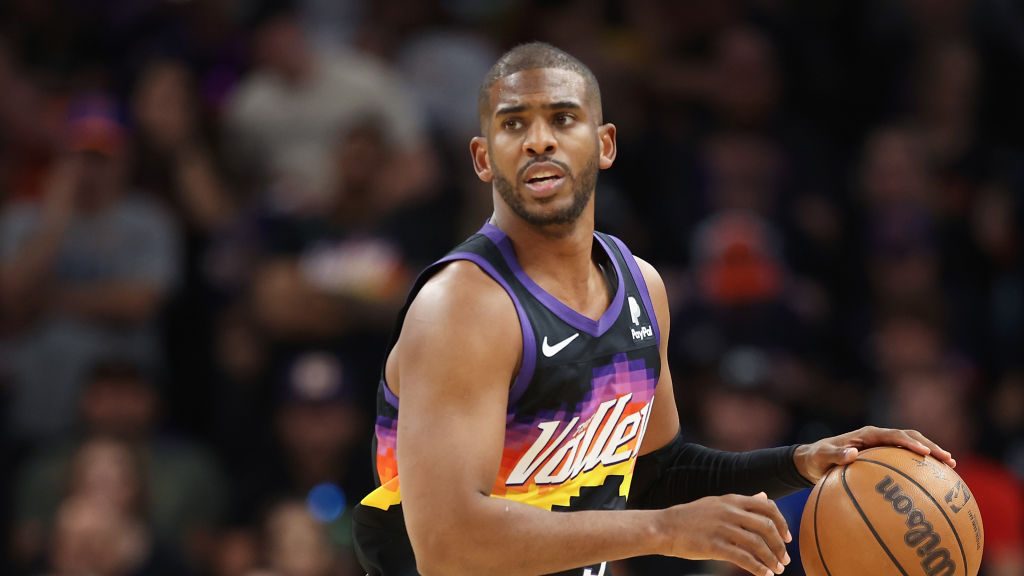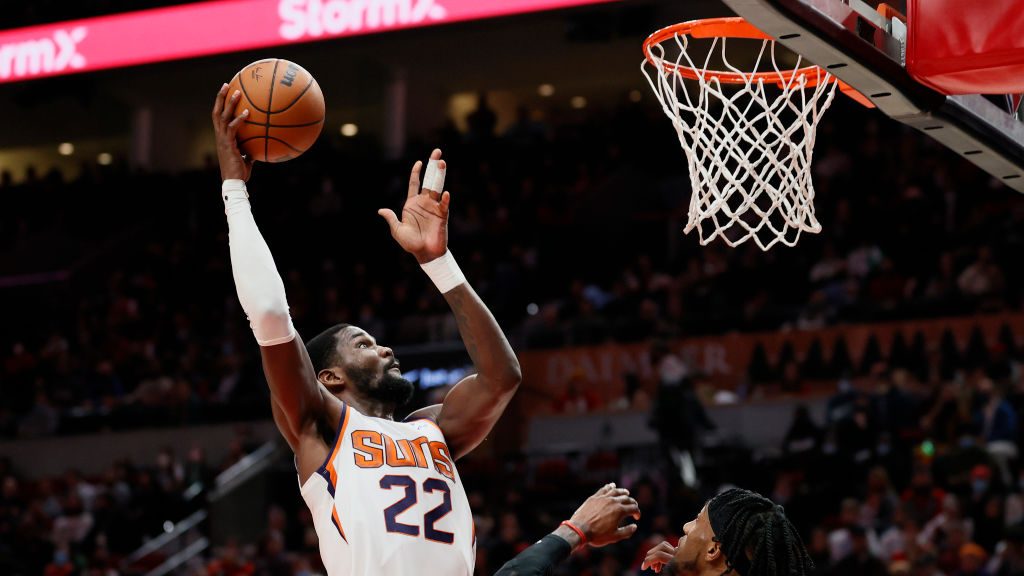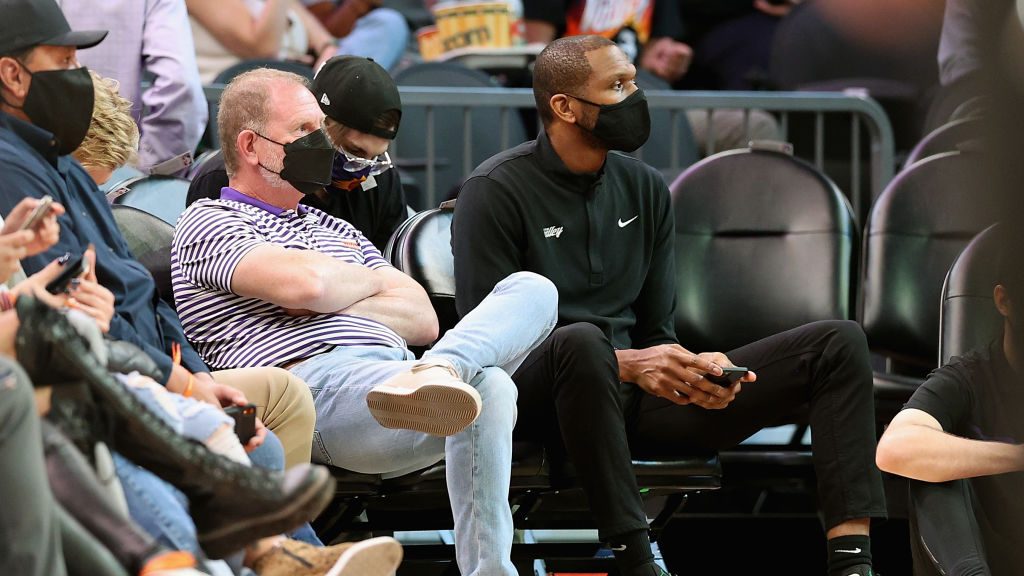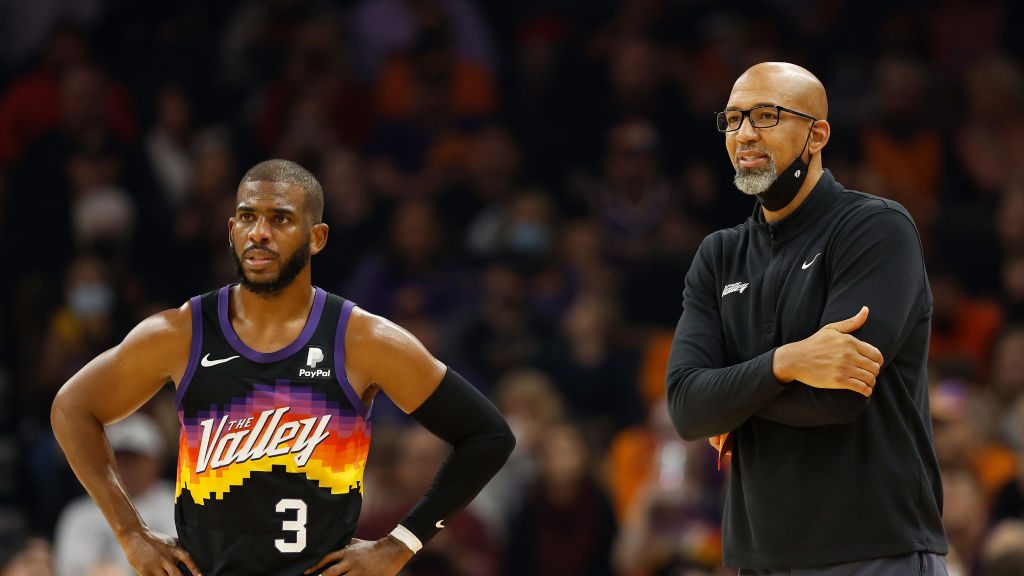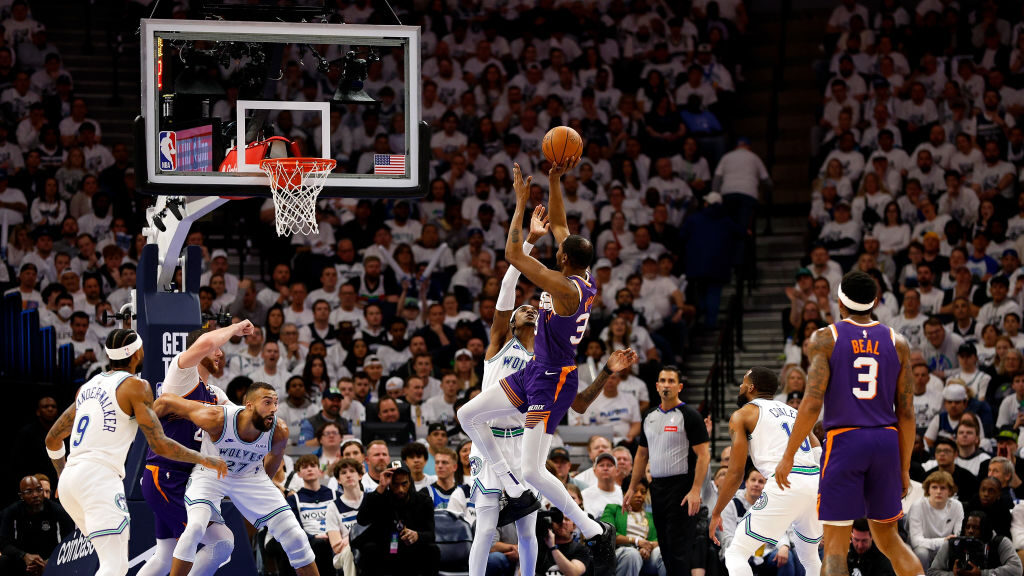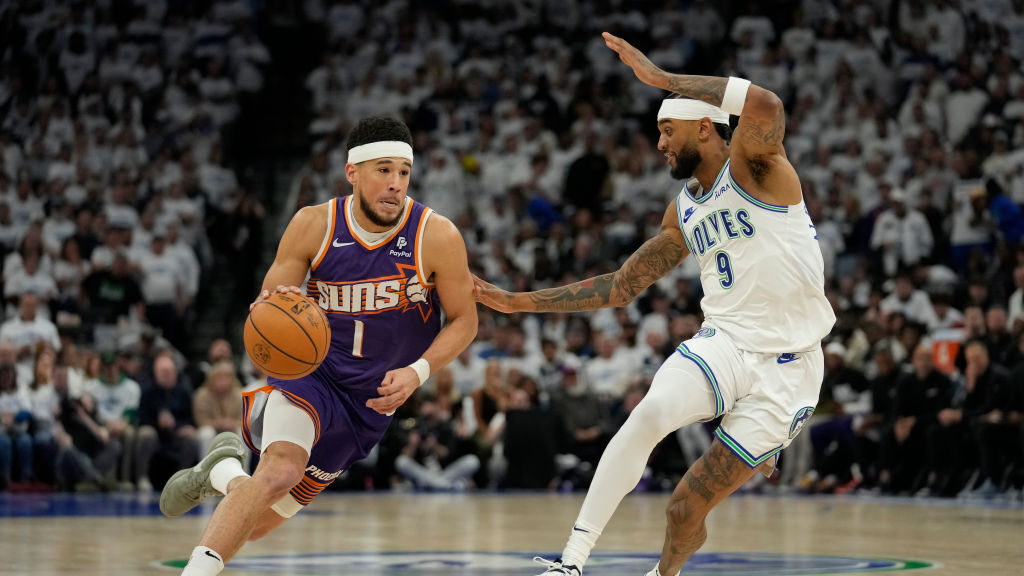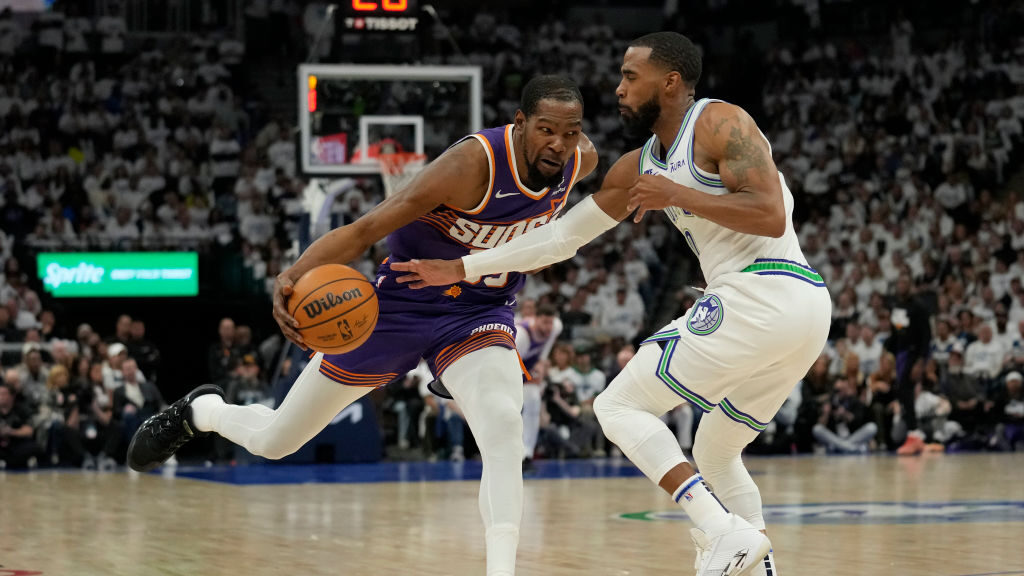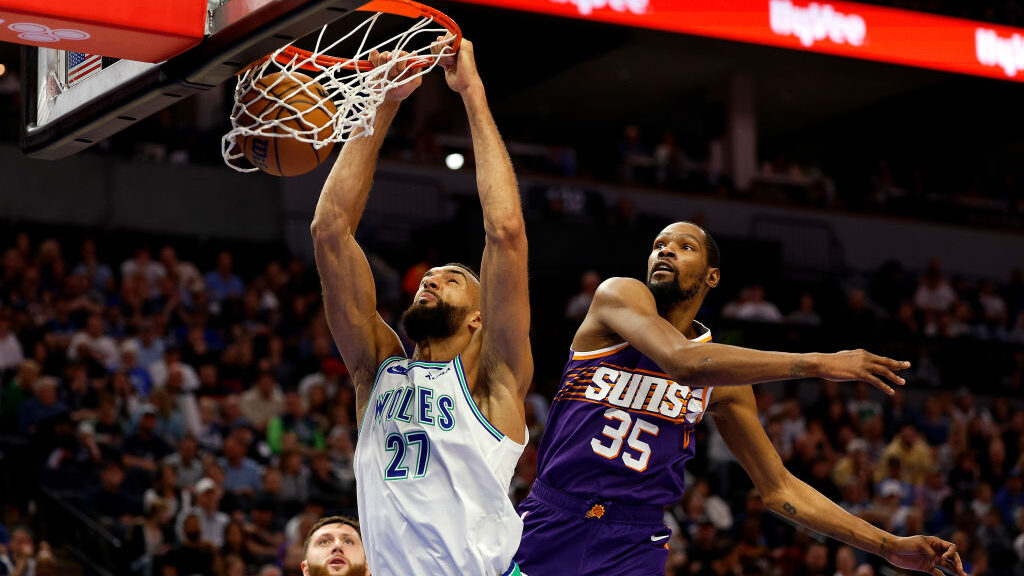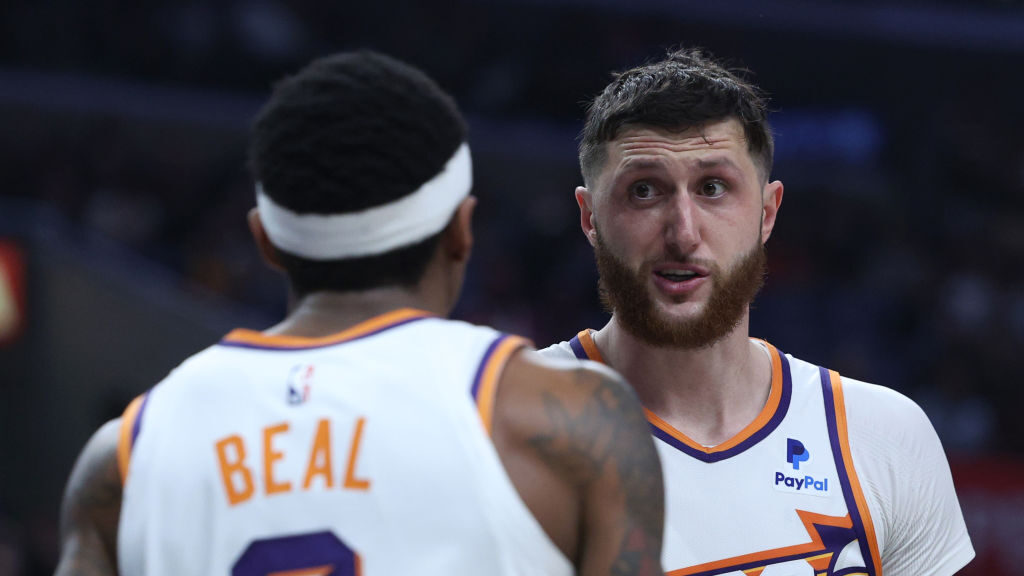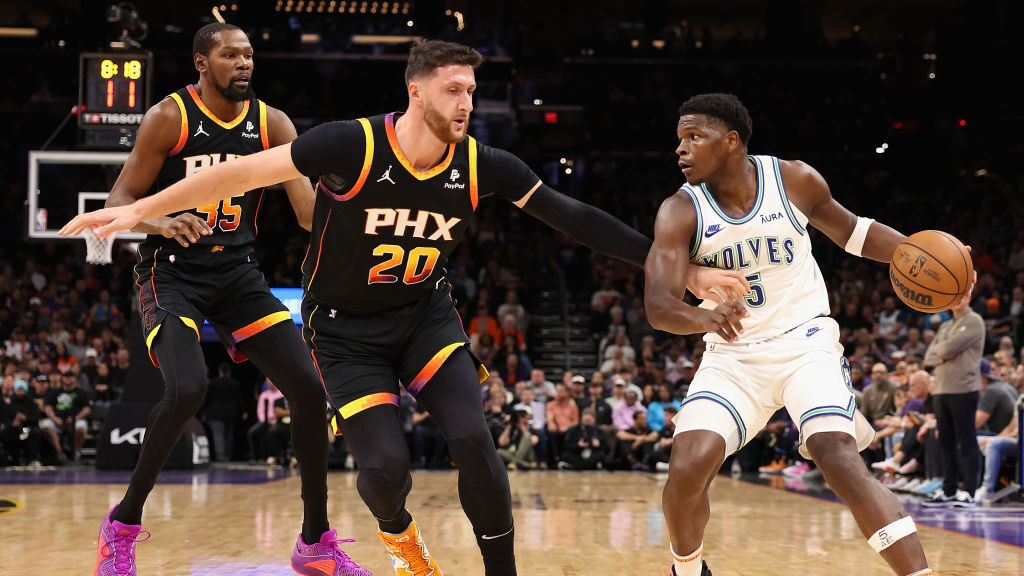Phoenix Suns salary cap Q&A for the 2022 offseason
May 22, 2022, 8:00 AM | Updated: May 31, 2022, 2:05 pm
Maintaining an NBA playoff team gets expensive. The Phoenix Suns haven’t dealt with such issues in more than a decade, but after an NBA Finals run in 2020-21 and a 64-win regular season this year, managing a roster gets a little more tricky.
Deandre Ayton’s restricted free agency and Mikal Bridges’ extension kicking in are part of the tightening financial situation for the Suns and general manager James Jones looking to 2022-23.
Here’s a quick Q&A covering how Phoenix might navigate this offseason.
Are the Suns over the salary cap?
As of Phoenix’s playoff exit, nine players are under guaranteed contracts for 2022-23. The total those nine players will make, $128.8 million, is already over the expected $122 million salary cap.
That means the Suns are limited in who they add, though re-signing their own players who are free agents would allow them to keep going above the cap because they have their Bird rights. Those unrestricted free agents have potential cap holds as seen in yellow in the table below.
What about the luxury tax line?
Phoenix is about $20 million from the $149 million luxury tax threshold and will cross it should Deandre Ayton return on anything close to a max contract. A max deal starts his contract at $30.5 million, according to ESPN’s Bobby Marks.
Phoenix Suns future salary cap
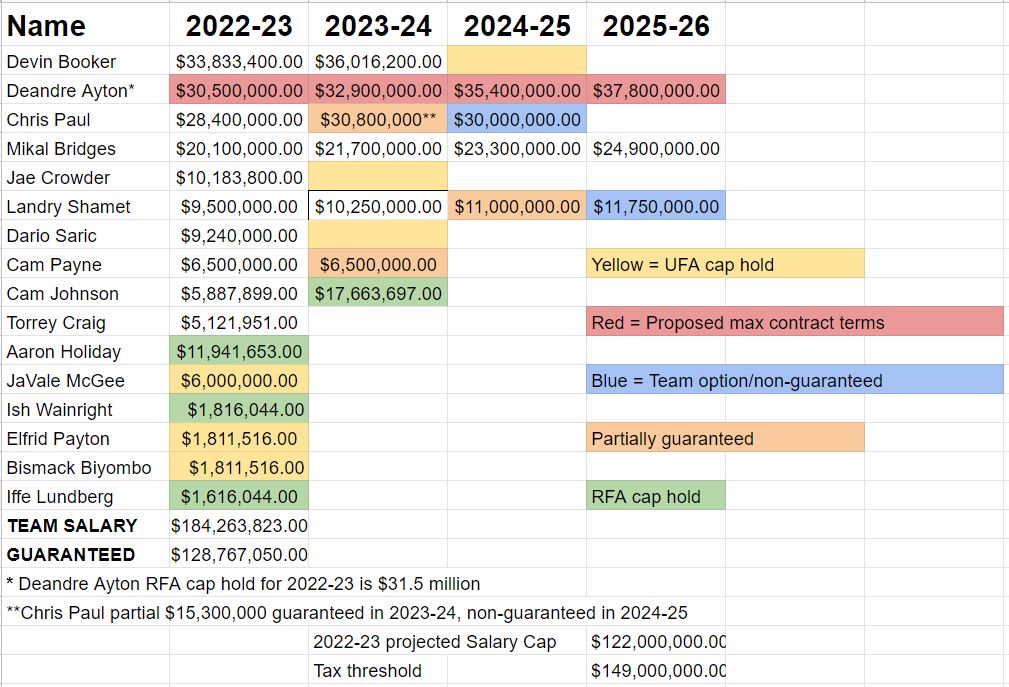 (Figures via Spotrac and ESPN’s Bobby Marks)
(Figures via Spotrac and ESPN’s Bobby Marks)
How does Ayton’s restricted free agency work?
The basics: Ayton can search for an offer sheet that will give the Suns a few days to match if he doesn’t just re-sign with Phoenix cleanly.
The Suns can offer a full five-year, $177 million contract or a four-year, $136.6 million deal. Other teams can offer a little less at four years and $131 million.
Only 17 players have signed offer sheets in history, with seven going unmatched.
To make Ayton a restricted free agent, the Suns will activate a $16.4 million qualifying offer for one year. He can sign that and bet on himself hitting unrestricted free agency after playing for that amount in Phoenix next year. Few players in the past — and none of Ayton’s stature — have taken those deals (Chicago’s Ben Gordon and Detroit’s Greg Monroe were the most well-known).
Couldn’t the Suns get a big-time player in a trade for Ayton?
Not likely.
Via sign-and-trade, Ayton’s potential max deal comes with a big asterisk.
According to Marks, only the Detroit Pistons, Indiana Pacers, Orlando Magic and San Antonio Spurs project to have more than the $30.5 million in cap space needed to max out Ayton, while the Portland Trail Blazers could easily maneuver to do the same. Sign-and-trades to those teams would allow the Suns to take back approximately the equal amount of salary.
That short list of teams, of course, already has the power to sign Ayton straight up and would see if Phoenix wanted to match the restricted free agent.
But otherwise, any trade that puts the team receiving Ayton over the salary cap would only be allowed to send back salaries as if Ayton’s contract was 50% of the amount of his actual first year of his new deal.
In other words, for the Suns, dealing Ayton to most teams would put that team over the cap and therefore be as if Phoenix were trading a player only making $15.7 million next season (50% of his actual deal). By the standard trade rule, the Suns could take on 125% — of the 50% — of Ayton’s first year of his new deal, plus $100,000. The return would not be close to trading a player making $30.5 million.
Of course, including a third team could help get a deal through with more money (i.e. better players) coming to the Suns.
What is the luxury tax anyway?
Great question! The Suns have not forged into tax territory since the 2009-10 Western Conference Finals run in the Steve Nash era.
The tax begins when the team crosses that $149 million threshold. It makes a team pay $1.50 extra for each dollar over the tax line, up to a $4,999,999 limit before the tax rate increases. The tax rate increases for the next $5 million after that, so on and so forth.
Those taxes are a dollar more at each $5 million increase in salary cap if a team is paying taxes for three of the prior four years, which for Phoenix would be something to at least be mindful of starting with the 2025-26 season.
Who is an unrestricted free agent?
Centers JaVale McGee and Bismack Biyombo along with point guards Aaron Holiday and Elfrid Payton. Deep bench reserves Ish Wainright and Iffe Lundberg can be restricted free agents.
How can the Suns acquire new players, and at what cost?
As it stands, Phoenix does not have boatloads of money to spend by being over the salary cap.
The Suns have a $6.4 million midlevel exception, assuming they are taxpayers, and could also fill out the roster with minimum contracts. Trades can open up space to get below the salary cap or to bring back players on similar contracts.
What contracts might be tradeable to free up cap space and/or change the roster composition?
Expiring contracts are important. Jae Crowder ($10.2 million), Dario Saric ($9.2 million) and Torrey Craig ($5.1 million) are pieces that might be considered moveable.
Cam Johnson also has a $5.9 million contract and is a young role player whose shooting is highly valued. He’ll be a restricted free agent and could be used as a more intriguing trade piece, though the Suns likely want to lock him in with an extension this summer.
What about draft picks?
The Suns used their first-round choice for the 2022 draft to acquire Chris Paul two years ago and do not have a second-rounder after including their 2022 pick and Jalen Smith to the Indiana Pacers that netted them Craig.
They next have a first-round pick in 2023.



